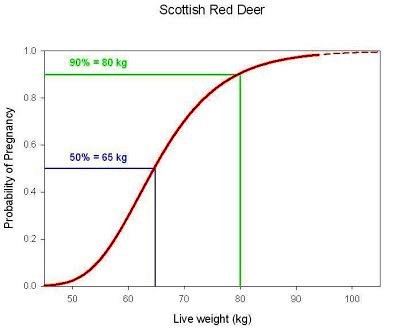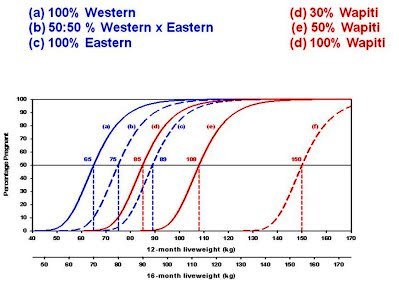Red deer and wapiti cows on NZ deer farms normally attain puberty (first ovulation) at 16 months of age during their second autumn. Hinds that attain puberty at 16 months are highly likely to conceive and calve at about 24 months of age. However, in order to do so Rising two-year-old R2 hinds must reach 70% of their adult body weight by their second autumn. Failure to do so will delay puberty by at least a year.
Key points
The ‘body weight threshold’ is the critical live-weight a hind must achieve in order to become reproductively capable in her second autumn.
When considering live-weight targets for ensure good reproductive success in young hinds, farmers need to be aware of the actual genotype of their hinds.
There is recent evidence that poor growth performance of hinds in their first 3-4 months of life (i.e. while on their mums) can influence puberty threshold weights later in life effectively forcing hinds to reach a higher weight threshold in order to breed at 16 months.
More resources
Asher, G. W., Scott, I.C., Archer, J.A., Ward, J.F., Littlejohn, R.P. (2010) Seasonal luteal cyclicity of pubertal and adult red deer (Cervus elaphus)
Asher, G.W., Archer, J.A., Scott, I.C., O’Neill, K.T., Ward, J.F., Littlejohn, R.P. (2005) Reproductive performance of pubertal red deer (Cervus elaphus) hinds: Effects of genetic introgression of wapiti subspecies on pregnancy rates at 18 months of age. Animal Reproduction Science 90: 287-306.
Asher, G.W., Archer, J.A., Ward, J.F., Scott, I.C., Littlejohn, R.P. (2011) Effect of exogenous melatonin implants on the incidence and timing of puberty in female red deer (Cervus elaphus). Animal Reproduction Science 123: 202-209.



